US-VN History
Democracy in action: The 1970 Senatorial elections in the Republic of Vietnam (Part 2)
Published on
By
Tạ Văn Tài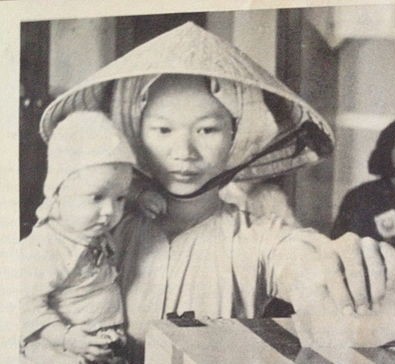
Tai Van Ta, Harvard Law School
May 2007
Democracy in action: The 1970 Senatorial elections in the Republic of Vietnam (Part 1, Part 2, Part 3, Part 4, Part 5)
ABSTRACT
Prefacing and ending with brief summaries of the political history of South Vietnam (1954-75), this paper focuses on the 1970 Senatorial elections, studied through a pre-election poll and an exit poll of 875 voters in the capital city of Saigon (probably the only political poll, during that period, conducted independently by a non-governmental group of researchers under the guidance of a professor of social science research methods). The analysis of the results of the polls show that (1) Even the population sample is not idealistically a stratified random sample of the whole nationwide population, the study can predict correctly the outcome with the three victorious slates of candidates, although with a slight difference in ranking.; (2) that the mass followings of the two dominant religious forces, the Catholics and the Buddhists, and their prominent personalities, were the factors in their slates’ respective victories, with the ‘third force’ Buddhists being the strongest political force in society and the number one victor in the elections, even they were anti-government and ran against a government-supported slate of candidates; this latter, even with the full force of government help, came second to the Buddhist slate, and the interviewed voters said they voted for the Buddhist slate because besides its religious (Buddhist) representativeness , the voters wanted peace represented by the Buddhists’ position; and that (3) the Buddhists were victorious despite the fact that they did not use so much the campaign means (interviews in the press, posters and banderoles) as the other slates, and despite that they were heavily criticized in many articles in the newspapers, but they fiercely condemned the government.
It is interesting to note that this free and fair election, encouraged by US Ambassador Bunker, was the climactic development of democracy in South Vietnam, which incipient democracy, unfortunately, was to be killed—even before the Communist troops overran South Vietnam in 1975–by President Nguyen Van Thieu just one year later, in 1971, when he ran a one-man show of presidential elections.
The following study is the result of polling 875 voters in Districts 3 and 10 among the 11 districts of the Capital of Saigon, before and after the August 1970 election of half of the Senate. The limitations of the population sample for study were due to time constraints and budget limits. But it is worthwhile to preserve the data collected in this poll because the polling was probably the only political poll in the 20- year history of South Vietnam, as I was the first professor who wrote the only published (1974) textbook on social science research methods in South Vietnam (and probably the only one, because the textbook was later used by the new regime for the survey, beginning in 1985, and a copy was given to Chairman Pham Nhu Cuong of the State Committee for Social Sciences in 1991 when he visited Harvard and declared that “from now on, we do research to have data for policymaking and no more do research to justify policy already made”). Probably I was the only non-governmental pollster at the time and the only pollster who studied a political event, with the help of students of social science research methods (Other surveys during this 20-year history of South Vietnam –if any– were mainly on social and economic facts, done by government agencies)
PART 1. SIGNIFICANCE OF THE STUDY AND STRATEGY FOR CONDUCTING THE RESEARCH
Initially, we should ascertain the meaning of this study and describe the polling and method of analysis, as these would affect the validity of the findings.
In this 1970 Senatorial election in South Vietnam, the voters were to choose 3 slates of 10 candidates each, among the 16 running slates, to fill the 30 vacating seats, or half, of the Senate.
A. MEANING OF THE STUDY. The poll was based on a questionnaire with 3 questions: (1) What slate of candidates will you (or did you) vote for, among the 16 slates? : (2) Please tell your reason for that vote? (3) Through what means did you get to know and like that slate of candidates?
At the end of the answers, the pollsters would have to note these data about the voters: sex, approximate age (21-30,31-4-,41-50, or above 51), occupation, and educational level (if feasible), religion and party/group affiliation (if feasible).
Tabulation of the answers to the first question (votes were given to a slate of candidates) would predict the ranking of slates for possible victory, in order of first place, second place etc. We might assess the predicting capacity of this kind of poll. This capacity for prediction would depend very much on three requirements: (a) no fraud in the election process; (b) the sample of 875 voters must be representative of the various population strata in the whole country; if the sample was biased, then the result would be limited invalidity; (c) the respondents must answer truthfully about their votes; this would depend on the skill of the pollster who must be adept at eliciting the answer and also on the political atmosphere as to whether it permitted revealing truthfully the voters’ thinking.
Tabulation of the answers to the second question (reasons for the vote) would inform about the voting behavior of Vietnamese, at least of the urban population. This study of social psychology would be the first step toward the understanding of the political thinking of the Vietnamese population and would help the political practitioners in their activities.
Tabulation of the relationships between social factors such as sex, age, occupation, educational level, religion, party/group affiliation on the one hand, and their votes on the other would inform us about those relationships.
Finally, the tabulation of the answers to the third question (means to get to know about the candidates: press, television, etc…) would suggest which media would be most effective in politics in Vietnam. Media communication is the central element in the political culture of a country.
We would not discuss election laws, the ways the government organized the elections, platform, and methods of campaigning, fundraising, and expenses, etc.
B. STRATEGY FOR CONDUCTING RESEARCH.
To realize the above aims, the ideal survey strategy must satisfy three conditions: (1) there must be based on a representative random sample of voters from each district of all the provinces to reflect the various population strata in the country ; (2) the respondents must answer candidly about their attitude; (3) no fraud in the elections. Only with these conditions can one be sure that the prediction of the voting results and the description of the voters’ behavior are reliably correct
In this survey project within Saigon, we could, for the narrow purpose of predicting local results in Saigon, discount fraud because there was no indication of fraud within the capital city ( condition 3). As for the voters’ truthful answers, this investigator had trained carefully the student assistants in the art of eliciting the sincere cooperation of the voters in their answers. Of course, in the then political atmosphere of Vietnam, it was difficult to completely get rid of the masses’ nervousness in order to reach their candid political thoughts, and acts; but the pollsters introduced themselves as students in field research practice on the social survey, for a journalism class, and thus they easily secured the cooperation of the interviewees. Also, Capital urban dwellers dared to speak up their minds, not hiding their thoughts in fear like peasants. Therefore we could trust the sincerity of the voters’ answers (condition 2). But we must say ( as to condition no. 1) that 875 voters from Districts 3 and 10 of Saigon were slanted toward urban dwellers with higher educational level and political consciousness—without the presence of small-town and countryside residents who were certainly less educated and have less access to information and media. This means that the capacity for predicting the nationwide voting results from this survey would be greatly reduced. But the survey had to be restricted to a small sampling in Saigon by the limit of available time (only one week) and finance, due to the late decision on small funding of the survey project by the funding authority—which also would not approve our suggestion of interviewing also in a few rural districts just outside Saigon. As a Vietnamese saying does, “poverty limits wisdom”. The ideal sample would be a collection of interviewees belonging to different categories of people reflecting the nationwide percentage distribution of the population into various categories in terms of sex, age, occupation, educational level, religion, party/group affiliation and without such a stratified sample, we could not tabulate the survey results and then extrapolate and wisely predict nationwide voting results or describe the voters’ behavior in South Vietnam as a whole. Not only poverty but the lack of reliable nationwide statistics on various population strata vitiated against the selection of a nationwide stratified sample. Our group of pollsters could only make a conscious effort to make the selection of 875 voters less biased by varying the choices of interviewees in terms of sex (half male and half female), age (belonging to all age groups—by looking at the targets before approaching them), occupation and educational level and religion (by post-interview questions on these factors). The practical measures for getting to a more representative sample were to walk to different streets where clustered different categories of people: residential, small business/shopping area, industrial/manufacturing area, slum, the middle-class area with villas, different religious habitation areas (example: Catholic or Buddhist inhabitant concentrations), and then in each street, to choose every 10th household to come in to interview; one inside the house, to look for people of different sex, age, educational level, etc.. This kind of adjusted sample of voters can help describe and describe voting behavior better, but there would be still limitations because it is not a nationwide representative stratified random sample.
PART II. ANALYSIS OF SURVEY RESULTS
The results of the poll will be presented in 4 sections: (1) Will the sample of 875 voters permit some prediction of the outcome of the elections? (2) Would the reasons adduced by voters for their votes inform us about their opinion and voting behavior? (3) Will the social background of the voters explain that opinion and that behavior? (4) With what ways and means did the candidates make themselves known to the voters?
SECTION 1. WILL THE POLL PERMIT PREDICTION OF THE OUTCOME OF THE ELECTION?
Before the election date, we interviewed 755 voters and summarized in Table I to test the predictive capacity of the survey.
After the election, we interviewed 120 more voters who already cast the real votes, to see the need for any modification of findings, and these votes were combined with the intended votes of the previous 755 interviewees to constitute Table II. The integration of the votes did not change the order of vote-getting of the slates of candidates, the only change being the percentage of non-participating citizens (no opinion, hiding opinion, or non-voting) decreased a little bit from 25.8% to 25%. In other words, the additional 120 interviews were not necessary. Provided that we have a representative sample of the electorate who answered truthfully, there is no need for a post-election poll (or exit poll) that merely confirmed the pre-election poll.
Table I. Votes that 755 citizens said before the election that they would cast for the slates of candidates
Order in which the slates, identified by name of the leader, Number of planned votes
lined up as winner
1.Nguyen Van Huyen (mainly catholic members) ( symbol:Bong Hue or Lily) 285
2.Vu Van Mau (mainly Buddhist members) ( symbol:Hoa Sen or Lotus) 254
3.Huynh Van Cao (Government-supported) (symbol: Mat Troi or The Sun) 99
4. Nguyen Cao Hach (supported by one Buddhist group:Quoc Tu) (symbol:Ca or fish) 93
5. Nguyen Phuoc Dai (lawyers, professional) (symbol: Lu Dong or incense burner) 80
6. Nguyen Ngoc Huy (Cap Tien political party)
(symbol: Bo cau Nong dan or pigeon/peasant) 54
7. Truong Vinh Le ( supported by ethnic Chinese) (symbol: Cai Nha or the house) 49
8. Truong Cong Cuu (symbol: Me bong Con or mother and child) 45
9. Nguyen Huu To (symbol: Nong Cong Binh or peasant-worker-soldier) 41
10. Nguyen Dai Bang (symbol: Ba Bong Sen or Three Lotus) 39
11. Nguyen Anh Tuan (symbol: Ky lan or Unicorn) 36
12. Nguyen Gia Hien (symbol: Sao Sang or Bright Star) 35
13. Nguyen Tien Hy (symbol: Ba Cay Chum Lai or Cluster of 3 trees) 26
14. Phan Ba Cam (Hoa Hao religion) (Symbol: Ga gay sang or Crowing Cock ) 20
15. Nguyen Van Canh (Dai Viet Party) (Symbol: Bong Lua or Rice Ear) 9
16. Nguyen Van Lai (Symbol: Chim Hoa Binh or Bird of Peace) 9
Voters who would not cast for any slate (Non-participating interviewees)
a. No opinion yet but will vote with family or on some criterion or just drop “any vote”: 132
b.Would not reveal opinion: 2
c. Would not go to the poll booth or would cast a blank vote (no confidence in election or candidate): 43
Total a, b, and c: 195 (25.8%)
Table II.The combined number of would-be votes and actually cast votes of 875 interviewees (pre-and post-election)
Order in which the slates lined up as winner Combined number of expected and cast votes
- N V Huyen 336
- V V Mau 309
- H V Cao 115
- N C Hach 107
- N P Dai 90
- N N Huy 74
- T V Le 68
- T C Cuu 57
- N H To 56
- N D Bang 44
- N A Tuan 42
- N G Hien 39
- N T Hy 31
- P B Cam 23
- N V Canh 12
- N V Lai 9
Non-participating interviewees
- No opinion (before the election) 132
- Hiding opinion (before and after the election) 27
- Not coming to the voting booth or casting blank vote 59
Total of a,b, and c 218 ( 25%)
In Table III, we compare the actual votes cast in Saigon and nationwide (left and right columns B and C) with our survey result (middle column A), noting the degrees of error or deviation of our survey result on the 2 sides of the middle column
B. Actual votes in Saigon A. Survey result in 2 districts of Saigon C. Actual votes /nationwide
Deviation degrees Deviation degrees
(must count up or down from survey to find an actual ranking of slate)
< being doing down; > being going up
B.Actual votes in Saigon A. Survey result in 2 districts of Saigon C. Actual votes /nationwide
Deviation degrees Deviation degrees
(must count up or down from survey to find actual ranking of slate)
< being doing down; > being going up
1. Huyen 121,069 : 0 1. NV Huyen <2 : 1. Mau 1,149,597
2. Le 94,251 : <1 2. V V Mau >1 : 2. Cao 1,106,288
3. Mau 88,291 : <3 3. H V Cao >1 : 3. Huyen 882,274
4. Huy 81,226 : <10 4. N C Hach <12 : 4. Le 800.453
5. Dai 50,420 : 0 5. N.P.Dai <4 : 5. Huy 654,833
6 . Cao 47,717 : >2 6. N N Huy >1 : 6 Canh 628,922
7. Bang 45,510 : >5 7. T V Le >3 : 7. Bang 611, 351
8. Lai 37, 464 : <2 8. TC Cuu 0 : 8. Cuu 591,258
9. Tuan 2, 318 : <2 9. N H To < 5 : 9. Dai 533,692
10. Cuu 31,380 : >3 10. N D Bang >3 : 10. Lai 492,131
11. To 30,028 : >2 11. N A Tuan <4 : 11. Cam 453,168
12. Cam 30,011 : <1 12. N G Hien 0 : 12 Hien 430,465
13. Hien 29,450 : <3 13. N T Hy 0 : 13. Hy 439,688
14. Hach 28,345 : >2 14. P B Cam >3 : 14. To 399,767
15. Canh 26,238 : 0 15. N V Canh >9 : 15. Tuan 342,416
16. Hy 20,604 : >8 16. N V Lai >6 : 16. Hach 320,365
Non-participant 41% : Non-participant 25% : Non-participant 34%
Comparing the survey result in the middle column with the two actual results in Saigon and nationwide, we noted, in the middle column, the deviation in the ranking of the results: if there was no deviation or the result of the survey was similar to the actual votes, we would write down O as the degree of deviation, but if there was a deviation of the votes in the survey and the actual votes, we would write down two numbers next to survey result to indicate how many steps counting up or down from the ranking of the slate in question in our survey, to discover the real ranking of that slate in the actual vote results in Saigon and nationwide. Zero (0) means that our survey predicted very well. Deviation of 1 to 2 degrees means the survey was good. Deviation of 3-4 degrees means the survey is just average. Deviation of more than 5 steps means the survey was poor. We adopt this lenient assessment of the accuracy of the survey because the 1970 election of the Senate in Vietnam was not like a typical election in the United States between two or three candidates only, while in Vietnam there were 16 slates of candidates, and the difference of a few hundred votes would change the ranking of the slates drastically, even many steps up or down in the ranking. It is easier to predict the result of a US election with only two candidates for each position. Even given this difficulty of predicting the exact ranking among 16 slates of candidates with only a non-representative sample in only two districts of the urban area of the capital of Saigon, we have at least predicted correctly the 3 victorious slates of candidates in the nationwide elections: Nguyen Van Huyen, Vu Van Mau, and Huynh Van Cao, although with the slight difference in ranking.
Going a little further into detail, comparing the survey result from two districts of Saigon (Column A) and the actual result of the votes in all 11 districts of Saigon (in Column B), we see that for 3 slates of candidates (Huyen, Dai, Canh), there was no deviation in ranking between the survey votes and the actual votes; for 7 slates, there was the deviation in the ranking of 1 or 2 steps (Le, Cao, Lai, Tuan, To, Cam, Hach); for 3 slates with a deviation of 3-4 steps, and for 3 slates, there was deviation beyond 5 steps.
Comparing the survey result in two districts of Saigon (column A) and the actual result nationwide (column C), we see that for 3 slates (Cuu, Hien, Hy), there was no deviation in ranking between the survey votes and the actual votes; for 4 slates, there was a deviation in the ranking of 1-2 steps; for 5 slates, a deviation of 3-4 steps; and for 4 slates, a deviation of 5 steps.
Evaluating the predictive capacity of the sample from 2 districts for all the 16 slates, we can say that the sample, even not representative, has a higher predictive capacity for the actual result in Saigon than for the actual result in the whole country. This is understandable because the sample of two urban districts of Saigon would be more closely reflecting the real attitude of the urban voters in Saigon. The deviation of the sample result from the actual voting result in Saigon was only 1-2 steps for 10 of the 16 slates of candidates. But if remember that the ultimate and truly useful purpose of this kind of political poll is not the accurate ranking of all the 16 slates of candidates, but the prediction of which 3 among the 16 slates would come out with the most votes and become victorious as senators, then our sample had predicted correctly at least for Huyen and Mau in Saigon and for all three, Mau, Cao and Huyen, in the whole country(again with a slight difference in ranking). And this shows also that the 1970 Senatorial elections were the freest and fairest in the history of the political development of Vietnam.
We would like to use some hypotheses derived from some data to explain here the big deviations of more than 5 steps in the predictions concerning the slates of N C Hach ,T.V Le , N.V. Lai, and N V Canh.
NC Hach slate was supported by the Buddhists of the Quoc Tu wing, consisting of Vietnamese who were refugees from North Vietnam in 1954 and who were living in concentration in districts 3 and 10; therefore its ranking was high in the survey of districts 3 and 10; but these Buddhists of the Quoc Tu wing did not have followers in other districts and therefore the actual result in Saigon for it was rank 14; they did not have strong organization and/or many followers in the other areas or provinces of the country and therefore its actual rank nationwide was 16 (the lowest vote-getter). Moreover, student interviewers might interview many other students who naturally supported law professor Nguyen Cao Hach for his personal prestige among them This would be evident further in the later analysis which shows that Professor Hach had more supporters among university students than among high or elementary school graduates, in contrast to the other slates who got fewer votes from university students than high or elementary school graduates.
The survey prediction on T V Le was a 5-step deviation downward from the actual result in Saigon because the sample did not include the Vietnamese of Chinese descent in other districts of the Cho Lon Section of Saigon, where this slate spent an enormous amount of money to hire campaign workers, wine and dine the Bang (clan) heads, and therefore the sample could not predict well the actual votes of this slate in Saigon.
The survey result deviated from the actual rank of N V Lai, with the symbol: Bird of Peace, in Saigon and nationwide, by 6-8 steps because a lot of voters of lower education level mistook this slate for another slate headed by Professor Nguyen Ngoc Huy of “ Nationalist Cap Tien Movement” Party, with the symbol: Pigeon of Peace and Peasant, and voted for the Bird of Peace while thinking of the Pigeon of Peace, giving the former a windfall profit in votes (a proof was the first rank of Pigeon of Peace in Hau Nghia and Long An Provinces, followed by the second and third rank of Bird of Peace there). Moreover, some less knowledgeable Buddhist voters might have thought Mr. N.V. Lai was indeed a real monk and voted for him.
As for N.V. Canh slate (with a symbol of Ear of Rice), the survey predicted correctly the rank in Saigon but deviated downward from the nationwide result by 9 steps, because in Central Vietnam, The Dai Viet Cach Mang Party had cadre spread the word among the population that the Buddhist clergy ordered that Buddhists should first support the Hoa Sen slate headed by Vu Van Mau and then secondly, support the Ear of Rice slate (the technique of riding on the coattail); moreover, probably the Dai Viet Cach Mang Party was strong in Central Vietnam; it was second in Thua Thien and Phu Yen Provinces, third in Hue City, Quang Nam, and Quang Tri Provinces. Therefore, a survey in 2 districts of Saigon could not predict well the votes in Central Vietnam of this slate.
The survey also predicted the non-participation percentage of voters as 25%, far from the actual non-participation of 41% in Saigon and 34% nationwide. We detected the reason for this deviation: in the poll, the interviewees wanted to show off their knowledge about current events, and their opinions on the candidates, but on election day, they might not go to the poll due to laziness. Another reason was that the student interviewers met with quite a few people who refused to answer, did not have an opinion or declared not in favor of any candidate, but then these students failed to record or count these people as part of the sample; therefore the non-participation percentage in the sample was reduced. (The students reported this to me only after the interviews had already been conducted, so there was no way to correct the data tabulation). Although we did not predict correctly the non-participation percentage of voters, but we did predict there would be a sizeable percentage of non-participating voters (25%)—which was the general trend in a free election. In any case, the survey did collect the reasons for non-participation: no clear opinion on the candidates (knowing only one or two among the ten in a slate), no confidence in the election (fraud?), no confidence in candidates (what can they do to change public affairs?) or no voting card.
* The author of this study thanks his students M.T.Cuong, N.V.Chinh, N.H.Duc, V.T.Dat, C.D.Phuc V.Tan, N.V.Tung, N.X.Thang, N.V.Trung, N.V.Vinh, N.H.Y, who helped to interview the voters, and his colleagues’ professors Diep Xuan Tan and Le Cong Truyen for analyzing part of the data, and especially professor Nguyen Van Bong, Chairman of the Association for Administrative Research who had encouraged and financed this project.
The author dedicates this study to the memory of the two leaders in the victorious Hoa Sen (Lotus) Slate of Candidates in the 1970 Senatorial Elections: The head of the slate, Professor Vu Van Mau, former Saigon Law School Dean and professor of the author, and later the author’s colleague in the same school, and Dr. Bui Tuong Huan, Saigon Law School professor and President of Hue University.
Democracy in action: The 1970 Senatorial elections in the Republic of Vietnam (Part 1, Part 2, Part 3, Part 4, Part 5)
You may like

Translation: The Decision in 2013 of the Central Committee of the Communist Party of China on Certain Major Issues Concerning Comprehensively Deepening Reform

Thủ Đức Demonstration High School: A Modern Educational Policy and Teaching Method of the Republic of Vietnam

Southeast Asia falls into China’s Trans-Asian Railway Network

A Proposed Outline for a Study on Republicanism in Modern Vietnamese History

Tran Le Xuan – Diplomatic Letters

Vietnam’s unresolved leadership question

Rethinking History and News Media in South Vietnam

“The Vietnam War Was an Unwinnable War”: On Factuality and Orthodoxy

Democracy in action: The 1970 Senatorial elections in the Republic of Vietnam (Part 1)

Pandemics and Morality: Lessons from Hanoi
US-VIETNAM REVIEW
-
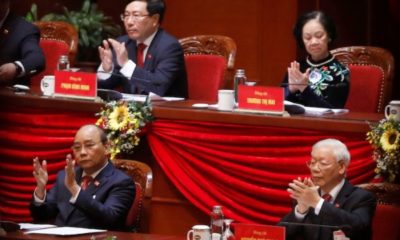
 Politics & Economy4 years ago
Politics & Economy4 years agoVietnam’s unresolved leadership question
-
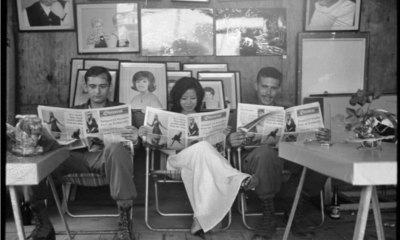
 Politics & Economy2 years ago
Politics & Economy2 years agoRethinking History and News Media in South Vietnam
-

 After 19751 year ago
After 19751 year ago“The Vietnam War Was an Unwinnable War”: On Factuality and Orthodoxy
-
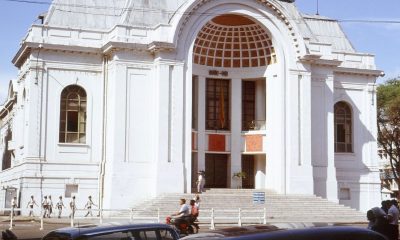
 ARCHIVES5 years ago
ARCHIVES5 years agoDemocracy in action: The 1970 Senatorial elections in the Republic of Vietnam (Part 1)
-

 Society & Culture5 years ago
Society & Culture5 years agoPandemics and Morality: Lessons from Hanoi
-

 Politics & Economy4 years ago
Politics & Economy4 years agoThe Limit to U.S.-Vietnam Security Cooperation
-

 Politics & Economy5 years ago
Politics & Economy5 years agoNational Shame: How We (Americans) can learn from Nguyễn An Ninh
-
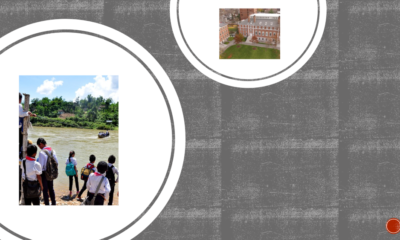
 Politics & Economy4 years ago
Politics & Economy4 years agoUS-Vietnam Partnership must Prioritize Vietnamese Education


